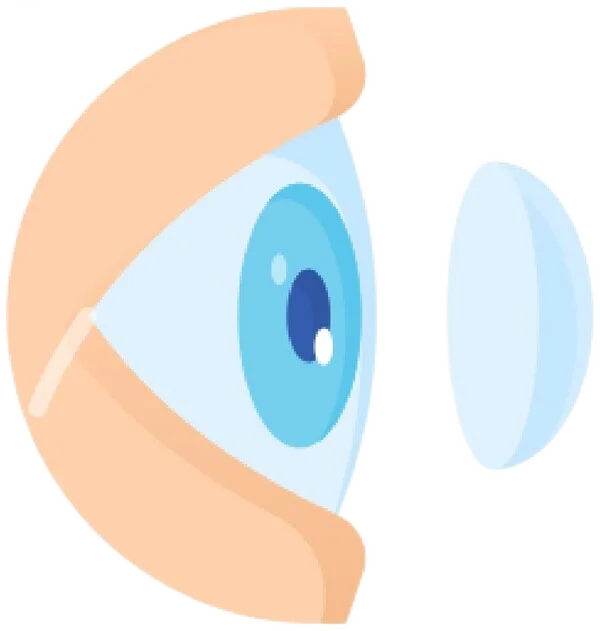
At our Cardiff clinic — located at Nuffield Hospital, Cardiff — we provide trusted, consultant-led cataract surgery tailored to your individual vision needs. All procedures are performed by Mr. Mo Majid, a leading UK eye surgeon with over 25 years of experience and a strong reputation for clinical precision and patient-focused care.
Whether you’re looking to restore clarity with standard cataract surgery or explore premium lens options for a life with less dependence on glasses, your treatment will be carefully planned and delivered from start to finish by Mr. Majid himself.
If cataracts are beginning to affect your daily life — causing blurred vision, sensitivity to light, or reduced confidence — our Cardiff-based clinic is here to help you regain clear, comfortable sight with minimal wait times and outstanding results.
Types of Cataract Surgery Available in Cardiff
At our Cardiff clinic based at Nuffield Hospital, we offer a full spectrum of cataract surgery options — all performed by expert consultant Mr. Mo Majid. Whether you’re seeking a straightforward procedure or have more complex visual needs, we tailor the surgical technique and lens choice to achieve the best outcome for your eyes.
1. Ultrasound Phacoemulsification
This modern method uses gentle ultrasound waves to break up and remove the cloudy lens through a micro-incision. It’s the standard of care for most cataract cases, offering quick healing, minimal discomfort, and reliable vision improvement.
2. Micro-Incision Cataract Surgery (MICS)
MICS uses an even smaller entry point than traditional phacoemulsification, reducing impact on the eye and often leading to faster visual recovery. It’s ideal for patients with sensitive corneas or those looking for a minimally invasive approach.
3. Complex or Secondary Lens Procedures
For patients who’ve had previous eye surgery, trauma, or unique anatomical challenges, Mr. Majid can perform advanced secondary lens implantation techniques — such as scleral-fixated IOLs — to restore clear vision safely and effectively.
4. Small-Incision Cataract Surgery (SICS)
This technique uses a slightly larger incision to manually remove denser or mature cataracts. It remains a valuable alternative for patients with very advanced cataracts where ultrasound may not be optimal.
Why Choose Us in Cardiff
Choosing cataract surgery is a big decision — and at our Cardiff clinic, based at Nuffield Health Cardiff Hospital, patients can feel confident knowing they are in safe, experienced hands.
Key reasons to choose our cataract service in Cardiff:
- Expert surgeon: Mr. Mo Majid, consultant ophthalmologist with 25+ years of cataract and premium lens surgery experience
- Strong reputation for clinical precision, excellent outcomes, and patient-focused care
- Modern facilities at Nuffield Health Cardiff Hospital with cutting-edge surgical technology
- Consultant-led treatment from initial consultation through to post-op review
- Rapid access to appointments with no long NHS waiting lists
- Advanced diagnostic imaging and premium lens options for tailored results
- Safe, expert-led surgery to restore clarity of vision and reduce dependence on glasses
Cataract Surgery – Procedure Details
At our Cardiff clinic, we ensure your cataract surgery experience is smooth, reassuring, and fully consultant-led — from first assessment to discharge on the day of surgery.
1. Pre-Operative Consultation
Your journey starts with a thorough consultation at Nuffield Health Cardiff Hospital, where Mr. Mo Majid will examine your eyes, explain your treatment options, and help you select the most appropriate intraocular lens (IOL). Using advanced diagnostic imaging, he will map your eye in detail to plan the procedure with precision. You’ll receive clear pre-surgery instructions and guidance on any medications to adjust beforehand.
2. On the Day of Surgery
You’ll be welcomed by our dedicated surgical team and prepared for the procedure, which typically takes around 20–30 minutes and is performed under local anaesthetic. You’ll remain awake but completely comfortable throughout.
Surgical steps include:
1. Anaesthesia
Local numbing drops are applied to the eye.
2. Micro-Incision
A tiny self-healing incision is made at the edge of the cornea.
3. Lens Removal
The clouded lens is gently broken up using ultrasound (phacoemulsification) and removed.
4. Lens Implantation
A folded IOL is inserted through the same incision and positioned precisely inside the eye.
5. No Stitches Required
The incision naturally seals itself, and no stitches are typically needed.
After the procedure, you’ll rest briefly in the recovery area before heading home the same day. A protective eye shield may be applied, and you’ll be given full instructions for your immediate recovery.
3. Recovery Timeframe
Most patients begin to notice clearer vision within 24 to 48 hours. While some light sensitivity or mild discomfort is normal early on, these symptoms usually resolve quickly. Most people resume regular activities within a few days, with full visual recovery typically taking 4–6 weeks.
World-Class Technology in Cardiff

At Nuffield Health Cardiff Hospital, your cataract surgery is supported by some of the most advanced eye care technology available in the UK. Every stage of your treatment — from initial diagnostics to the surgical procedure itself — is guided by precision tools designed to deliver consistently excellent outcomes.
Mr. Mo Majid uses cutting-edge microsurgical equipment, high-definition imaging, and the latest generation of intraocular lenses to ensure your care is tailored to your exact visual requirements. Whether you’re choosing a standard lens or exploring advanced premium options, your surgery benefits from the same level of clinical precision and innovation.
Our Cardiff facility is fully equipped to support complex cataract cases, ensuring you have access to high-end diagnostics and treatment — without the need to travel further afield. It’s just one of the ways we bring outstanding, consultant-led eye care closer to home.

Meet Your Surgeon in Cardiff
Senior Consultant Ophthalmologist | Specialist in Cataract and Premium Lens Surgery
Mr. Mo Majid is a highly respected Senior Consultant Ophthalmologist with over 25 years of clinical and surgical experience. Specialising in cataract surgery, premium lens implantation, and advanced retinal care, he brings world-class expertise to Nuffield Health Cardiff Hospital — delivering personalised, consultant-led care for patients across South Wales.
Leading Cataract Services in Cardiff
Patients at our Cardiff clinic benefit from Mr. Majid’s direct involvement at every stage — from the first consultation and diagnostic scans to surgery and post-operative follow-up. Known for his advanced surgical techniques and meticulous focus on visual outcomes, he has helped hundreds of patients achieve clearer vision, often with reduced dependence on glasses through premium lens options.
Qualifications & Recognition
Holds a rare Distinction in Cataract and Refractive Surgery
Maintains an exceptional 0% complication rate on the National Eye Surgeons Audit
Trained over 50 eye surgeons worldwide, many now practising in leading centres internationally
Academic & Professional Achievements
- Awarded a PhD from the University of Bristol for research into macular degeneration
- Widely published in respected international ophthalmology journals
- Active member of leading professional bodies, including:
- The Royal College of Ophthalmologists
- The American Society of Retina Specialists (ASRS)
- The American Academy of Ophthalmology (AAO)
- The Association for Research in Vision and Ophthalmology (ARVO)
- The Royal College of Ophthalmologists
Your Trusted Eye Surgeon
Whether you are considering standard cataract surgery or advanced premium lens implants, you can feel confident knowing your care is in the hands of one of the UK’s most experienced and trusted eye surgeons — right here in Cardiff.
Our Cardiff Clinic
Nuffield Hospital, Cardiff
- Cardiff Bay Hospital Dunleavy Drive Cardiff , CF11 0SN
- Mon-Fri 8am to 8pm, Sat-Sun - Closed
Aftercare & Recovery – Cataract Surgery in Cardiff
At our Cardiff clinic, your care continues well beyond the operating room. Under the expert guidance of Mr. Mo Majid, every patient receives a clear, personalised recovery plan to support safe healing and strong visual outcomes, with ongoing consultant-led support throughout.

What to Expect After Surgery
Clearer vision often returns within 24 to 48 hours, though some temporary symptoms like hazy vision, light sensitivity, or a gritty feeling in the eye may occur in the first few days. These typically resolve quickly with the help of prescribed antibiotic and anti-inflammatory eye drops.
You may be given a protective shield to wear while sleeping for the first few nights, helping to safeguard the eye as it begins to heal. During the early recovery phase, we recommend avoiding strenuous activity, bending over, swimming, or touching the eye unnecessarily.
Follow-Up Care at Nuffield Health Cardiff
Your post-operative review will take place locally at Nuffield Health Cardiff Hospital, where Mr. Majid will personally assess your healing and ensure everything is progressing smoothly. Any concerns or questions you have will be addressed directly, giving you complete confidence in your recovery.
Between appointments, our Cardiff-based support team is on hand to offer clear advice and reassurance whenever needed, so you’re never left waiting for help.
From first consultation to final follow-up, your care in Cardiff is managed with consistency, professionalism, and the personalised attention you deserve.
for the quickest response please use WhatsApp
Book an Appointment
Local FAQs — Cataract Surgery in Cardiff
How soon can I have cataract surgery in Cardiff?
Appointments at our Nuffield Health Cardiff Hospital clinic are available without the long delays often associated with NHS care. Depending on availability, most patients are seen promptly and can schedule surgery within a short timeframe.
Will Mr. Mo Majid personally perform my surgery in Cardiff?
Yes. Mr. Mo Majid personally carries out all cataract surgeries at our Cardiff location. From your initial consultation through to the procedure and follow-up care, your treatment is fully consultant-led — ensuring consistency and trust at every stage.
Is Nuffield Health Cardiff a private hospital?
Yes, our cataract services in Cardiff are delivered at Nuffield Health Cardiff Hospital, a highly regarded private medical facility known for its modern theatres, advanced diagnostic tools, and excellent patient care.
Can I access premium lens implants in Cardiff?
Absolutely. Mr. Majid offers a full range of advanced intraocular lenses (including multifocal, toric, and EDOF lenses) for patients seeking greater visual freedom after surgery. These lenses are selected based on your lifestyle, eye health, and vision goals.
Do you provide support after surgery at the Cardiff clinic?
Yes. All aftercare and follow-up appointments take place at Nuffield Health Cardiff, where Mr. Majid will review your progress and ensure your eye is healing as expected. You’ll also have access to a local support team for any post-op questions or concerns.







